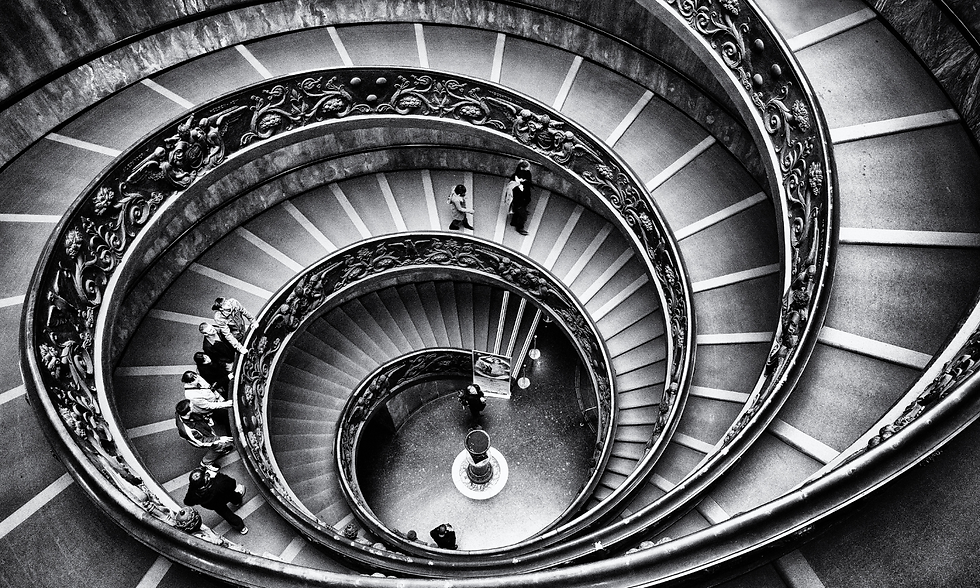The Symphony of Shapes: How Geometry Creates Harmony in Design
- Ishan Das

- Dec 1, 2024
- 2 min read
"Geometry is the archetype of the beauty of the world." – Johannes Kepler
Shapes surround us—circles, squares, triangles, and everything in between. But they’re not just random forms; they’re the foundation of #design. Geometry creates harmony in the visual world, guiding our eyes, organizing chaos, and delivering messages without words. It’s no wonder ancient civilizations considered it divine. Let’s dive into the magical relationship between shapes and design.
A Universal Language
Shapes are a universal language in design. A circle, for instance, is universally associated with unity, infinity, and perfection. Triangles can evoke energy and direction, while squares feel solid and reliable. By carefully choosing shapes, designers can craft #emotional connections and subtly guide viewers.
Take the Apple logo. That clean, rounded shape with a simple bite is inviting, approachable, and memorable. It’s a design masterstroke that communicates simplicity and innovation.

Proportions That Resonate
"Without mathematics, there’s no art." – Luca Pacioli
Have you ever wondered why some designs just feel... right? The answer often lies in proportions, particularly the Golden Ratio. This mathematical principle, often represented by the Greek letter φ (phi), has been used in everything from the Parthenon to the layout of the Mona Lisa.
Modern brands like Twitter and Pepsi also incorporate the Golden Ratio into their logos, ensuring visual balance and harmony that’s almost imperceptible—but undeniably effective.

Dynamic Symmetry in Nature
"Look deep into nature, and then you will understand everything better." – Albert Einstein
Nature itself is a symphony of geometry. From the perfect spirals of a sunflower to the hexagonal cells in a beehive, shapes create order and efficiency. Designers often mimic these patterns to bring a sense of natural harmony into their work, blending the organic with the geometric.
Think of the architecture of the Louvre Pyramid in Paris. Its triangular structure not only commands attention but also mirrors the precision and beauty found in natural formations.
Geometry in Motion
Shapes aren’t just static forms; they can suggest movement and energy. Curved lines, for example, feel dynamic and flowing, while sharp angles evoke tension or excitement. In digital design, geometry becomes even more crucial, as it helps create fluid user interfaces and compelling animations.
A well-designed website uses geometry to guide users effortlessly, turning a complex layout into an intuitive experience. It’s a silent symphony where every shape plays its part.

The Future of Shapes in Design
As we move into an era of augmented reality and immersive experiences, geometry will only become more critical. Designers are already exploring 3D forms and spatial relationships in ways we couldn’t have imagined a decade ago. Shapes aren’t just about what we see; they’re about what we feel, navigate, and interact with.
"Geometry will draw the soul toward truth and create the spirit of philosophy." – Plato

Wrapping It Up
Whether it’s a circle that feels complete, a triangle that points the way, or a square that grounds us, shapes are the building blocks of design harmony. They create balance, evoke emotion, and tell stories without saying a word.
So next time you admire a logo, an interface, or even a building, take a moment to appreciate the geometry at work. It’s not just design—it’s a symphony of shapes orchestrating beauty and function.


